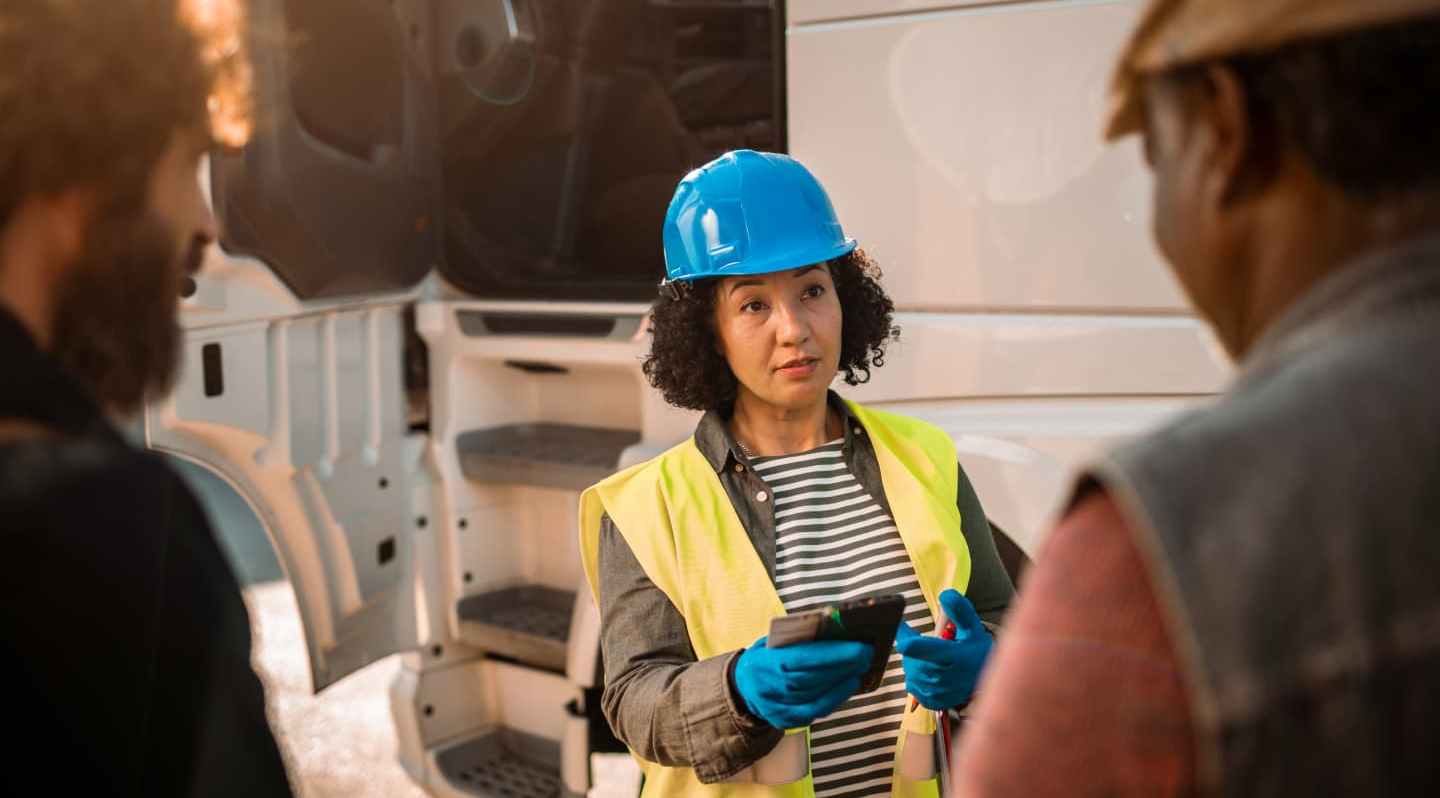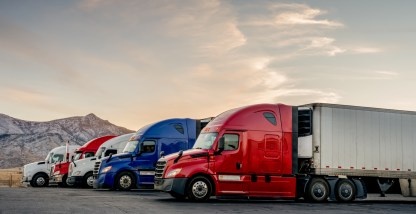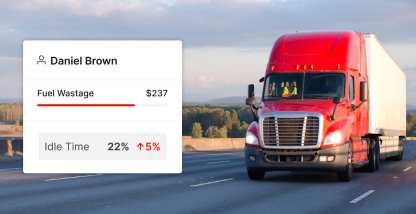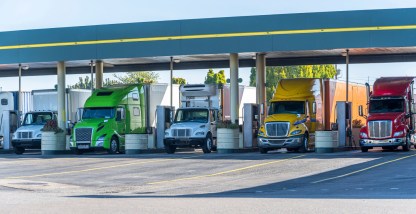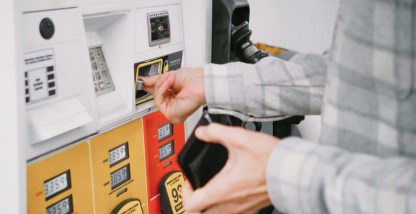The Best Fleets to Drive For list has been released every year by CarriersEdge since 2008. Back when social media was new and drivers were logging hours of service in paper logs.
A lot has changed since then. And CarriersEdge, a company that focuses on driver training, has spent years helping drivers make the best decisions along the way.
The Best Fleets to Drive For list entails a rigorous vetting process that includes an extensive questionnaire, a 100-question driver survey, and an interview with fleet leaders. This year, 150 companies were nominated by their drivers as the Best Fleets to Drive For.
Those nominations were whittled down to 20 who have met the CarriersEdge standards of excellence.
What does it take to be counted among the Best Fleets to Drive For? We interviewed CarriersEdge co-founders Jane Jazrawy and Mark Murrell to find out. Here are 10 best practices that the best fleets follow.
1. They care about empathy
This year required commercial transportation companies to think less about key performance indicators and more about the human factors that drive the business.
“One theme that emerged during the questionnaire and interview process was not what message is communicated, but how that message is communicated,” Murrell says. “Multiple companies acknowledged that the frequency of communications is not nearly as important as the sentiment of the message.”
One fleet, for example, added an app to its phone system, scoring each phone conversation based on relative positivity. Another did the same with its mobile communications. How effective these techniques are remains to be seen. Still, as fleets realize satisfied drivers stick around, they’re considering their feelings a lot more.
2. They host podcasts
Just as the best fleets are using technology in more innovative ways, they’re becoming more thoughtful about their content marketing.
“Podcasts are an efficient, personal way for fleets to stay in touch with the team,” Jazrawy says. “As fleets seek creative ways to engage drivers from a distance and keep the line of communication open, podcasts are becoming an important trend with lots of staying power.”
Recent data from “The Infinite Dial Report” reinforces Jazrawy’s stance. Forty-one percent of Americans surveyed said they had listened to a podcast in the last month, up from 37% a year ago.
“This growth goes to show that commercial fleets would be wise to use podcasts to get their message out and establish a dialog with employees,” Jazrawy says.
3. They’re proactive on safety
The best fleets don’t react to problems. They stay ahead of them. Where reactive companies begin damage control after an accident has occurred, proactive fleets take steps to prevent accidents from happening at all.
Long before others caught on, the best fleets used data-driven technologies to become safer and more efficient. As dash cams began to produce safer outcomes on the road, the best carriers continued to advocate for next-level safety innovations like the Motive AI Dashcam.
Through artificial intelligence and computer vision, the AI Dashcam reveals a driver’s level of awareness whenever an unsafe driving incident occurs.
Did the driver remove their eyes from the road? Were they reaching for something in the cab? The AI Dashcam captures these high-risk driving habits on video, alerting drivers to them as they happen.
Motive’s event intelligence and in-house safety team analyzes every video within seconds of an unsafe event to determine its context and severity.
Managers get prioritized videos with rich, actionable insights, and drivers receive automated coaching tips right through the Motive Driver App. Automated coaching helps to modify unsafe behavior before it leads to a collision.
4. They’re proactive on communication too
Fleets that work to prevent accidents on the road also work to prevent small problems from becoming big problems.
“Where reactive fleets wait for drivers to come knocking on a supervisor’s door, proactive fleets empower mid-level managers to address drivers’ concerns as they arise,” Murrell says. “Having that extra layer of communication between drivers and higher-ups ensures that concerns will be addressed in a timely manner.”
Murrell says that although the term “open-door policy” may sound like it’s part of a proactive culture, it’s actually an example of a reactive approach.
“Every fleet says they have an open-door policy, but I don’t think that’s necessarily true,” he says. “Saying ‘The door is always open’ is different from going out and saying, ‘What do you think is good and bad about this company and what should we be changing?’”
5. They support struggling employees
While some carriers prepared drivers for the pandemic by doling out hand sanitizer and reminding them to clean their trucks, the top 20 fleets did more.
“Several drivers were having mental health issues during the shutdown,” Jazrawy says. “When fleets took the time to make sure drivers were OK, it proved to be really important. We saw a big difference among the fleets that gave out supplies only, and those who followed up with drivers and asked how they were feeling.”
“Drivers stay at a company long term when they feel part of a family,” Murrell adds. “The fleets that found a way to make frontline workers feel connected during the shutdown were able to create a family vibe under very difficult circumstances.”
6. They use driver scorecards to improve performance
In the past, innovation centered on technology itself. This year, innovation came from how fleets are using technology, such as ELDs and dash cams.
“Technological solutions have become intertwined with best practices,” Murrell explains. “Fleets are incorporating driver scorecards into their safety programs to help drivers become safer individually and collectively.”
A driver scorecard provides a way of evaluating driver performance that is based on specific driving metrics. These might include speeding, hard braking, or close following.
Operations and safety managers can use driver scorecards to track high-risk behaviors and determine which drivers need coaching. Many companies categorize goals based on productivity, safety, or compliance.
Similar to driver scorecards, Motive’s coaching workspace can be used to evaluate performance and identify driving trends.
Located in the Safety Hub on the Motive Fleet Dashboard, the coaching workspace automatically generates a list of coachable drivers and their high-risk behaviors. This helps fleet managers better understand which drivers need attention and which behaviors to coach them on.
7. They’re diverse, equitable, and inclusive
Companies don’t build diversity, equity, and inclusion (DEI) overnight. Fleets with the most impressive DEI track record invested in their initiatives over several years.
American Central Transport, for example, has run a campaign called “I am ACT” aimed at attracting a diverse population of drivers. In the campaign, the company features videos of drivers of various ethnicities telling their stories in their own words.
“ACT presents a valuable lesson in how commercial fleets can use their own drivers to highlight diversity and inclusion within the company,” Jazrawy says. “When people see diversity and inclusion in a company’s corporate messaging and social posts, it will attract even more diverse workers to their ranks.”
When leadership is diverse, employees will be too. And not just racially diverse. In the commercial transportation industry, there’s been a surge in LGBTQ drivers.
“More and more, we’re hearing about trans drivers specifically,” Jazrawy says. “Fleets are always talking about the difficulty of attracting Millennials and Generation Z. Did you know that one in six Gen Z adults are part of the LGBTQ spectrum? And that 50% of them don’t think that gender is binary? Gen Z is very happy being on the spectrum. That will be the next big thing in the transportation industry, and fleets would do well to think of that.”
8. They use Facebook Live for real-time communication
Many carriers use Facebook for recruiting. But only the best of them use Facebook Live to have a conversation with drivers in real time.
When transportation companies use the platform to livestream meetings, it gives employees the chance to ask questions as the meeting unfolds. Even drivers who miss the live event can view the video later and leave questions or comments in the company’s Facebook feed.
“Not everyone is using Facebook to communicate with their teams, but they should be,” Jazrawy says. “With the conversations that take place through the live platform, fleets can gain insight into which issues drivers are concerned about and how satisfied they are.”
9. They use their own branded mobile apps
Today’s mobile app landscape is focused on efficiency. And smartphones continue to serve as the central command center for drivers on the road.
“The difference is that fleets now brand their own mobile apps,” Murrell says. “They’ve created apps that integrate with driver scorecards or allow drivers to check payroll information, scan documents, and plan loads, all right from their fingertips.”
The Motive Driver App, for example, has a Documents Feature that lets fleets manage, customize, and share documents with drivers. All from one integrated platform.
Managers can upload documents to the Fleet Dashboard, customize forms, or use pre-built templates using a simple drag-and-drop interface. They can also share documents directly with drivers.
Drivers, meanwhile, can use the Documents Feature to upload multiple photos per document, capture electronic signatures on mobile, and share documents with fleet managers.
10. They use safety technology to reward positive behavior
Some of the best fleets use dash cam clips to recognize drivers for a job well done, and it sets them apart.
“The tendency of transportation companies to use dash cams to reward safe driving instead of only tracking unsafe behaviors struck us as a highly positive development,” Jazrawy says. “We expect more carriers to start implementing this practice in the future.”
The Motive AI Dashcam can be utilized to share and showcase exceptional acts of safety among drivers.
Capable of capturing 104 hours of continuously recorded video, the dash cam, along with the Motive Safety Score, can provide visibility into your best drivers and those who need additional coaching.
With the added perspective that the Safety Score provides, safety managers can ensure that top drivers are rewarded for their good work and that others will be recognized for improvement.




